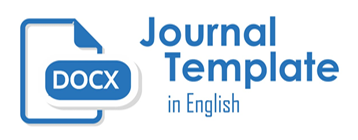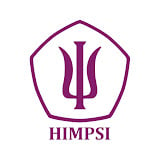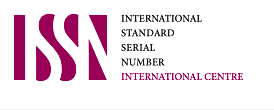Hubungan Learning Agility dan Perilaku Kolaborasi Pada Pekerja di Jakarta
Abstract
Penelitian ini dilakukan untuk melihat hubungan antara kemampuan learning agility dengan perilaku collaboration pada pekerja di Jakarta dalam menghadapi era globalisasi. Penelitian ini menggunakan pendekatan secara kuantitatif pada 235 partisipan pekerja dengan analisis korelasi spearmans dan metode convenience sampling kategori non-probability. Alat ukur yang digunakan adalah skala collaboration berdasarkan indikator yang di kemukakan oleh Getha Taylor (2008) berlandaskan metodologi yang telah dibuat oleh Mc Clelland (1973, 1975, 1976) dan Spencer & Spencer (1993). Kemudian menggunakan skala learning agility berdasarkan dimensi yang di kemukakan oleh Lambardo & Eichinger (2000) dan dipopulerkan oleh De Meuse (2010). Dengan menggunakan software SPSS versi 20.00. Hasil penelitian menunjukkan adanya signifikansi hubungan positif yang cukup antara kemampuan learning agility dengan kemampuan berperilaku collaboration pada pekerja dengan nilai (r = 0.565**; ρ = 0.000 < 0.05). Artinya semakin tinggi kemampuan learning agility pada pekerja di Jakarta maka akan semakin baik kemampuan perilaku collaboration ditempat kerjanya.
Keywords
Full Text:
PDFReferences
Bossche, P, Gijselaers, W, Segers, M, (2016). Social and Cognitive Factors Driving Teamwork in Collaborative Learning Environents: Team Learning Beliefs and Behaviors. Small Group Research. Vol 37 No 5
Bosworth, Kris. (2014). Developing Collaborative Skills in College Students, Center for Adolescent Studies at lndiana University.
Cross, Cross, Rob, Rebele, Reb, and Grant Adam. (2016). Collaborative Overload. Retrieved May 15, 2019 from https://hbr.org/2016/01/collaborative-overload.
Cross, Robert L., Roger D. Martin, and Leigh M. Weiss. (2006). Mapping the value of employee collaboration. The McKinsey Quarterly, 3 .
De Meuse P. Kenneth, Karunaratne, Bernadine, Alexander, Aileen. 2012. The Federal Agility Fix: Developing The Next Generation of fleaders. Korn Ferry Institute.
De Meuse, P. Kenneth, Dai, Guangrong, Hallenbeck, S. George, Tang, Y.King. 2015. Using Learning Agility to Identify High Potentials around the World. Korn Ferry Institute.
De Meuse, P. Kenneth, Dai, Guangrong, Swisher, V. 2012. Victoria, Leadership Development: Exploring, Clarifying, and Expanding Our Understanding of Learning Agility. Industrial and Organizational Psychology P 280–315.
De Meuse, P. Kenneth. Hostager, J. Todd. 2008. The Effects of a Diversity Learning Experience on Positive and Negative Diversity Perceptions. J Bus Psychol. 23:127–139. DOI 10.1007/s10869-008-9085-x
Deloitte Study: In Southeast Asia, 84 Percent Report C-Suite Isn’t Working Together Despite Need for Increased Collaboration on Human Capital Challenges. (2018). Retrieved May 15, 2019, from https://www2.deloitte.com/gu/en/pages/about-deloitte/articles/pr-human-capital-trends-2018-sea.html.
Douglas J., Gilbert, DBA, JD. (2013). Collaborative Competence: Redefi ning Management Education Through Social Construction. Journal of Psychological Issues in Organizational Culture, Volume 4, Number 3, © 2013 Bridgepoint Education, Inc. and Wiley Periodicals, Inc.DOI: 10.1002/jpoc.21116
Ductor Lorenzo, Sanjeev Goyal y Anja Prummer , Gender and Collaboration. Retreived 25 May 2019.
Durán, E., B., & Amandi, A. (2011). Personalised collaborative skills for student models, Interactive Learning Environments, 19:2, 143-162, DOI:10.1080/10494820802602667
Ferry, Korn. 2018. https://focus.kornferry.com/leadership-and-talent/the-organisational-x-factor-learning-agility/
Guangrong Dai; Kenneth P De Meuse; Clarke Peterson. 2010. Impact of Multi-Source Feedback on Leadership Competency Development: Journal of Managerial Issues; Summer 2010; 22, 2; ProQuest Psychology Journals pg. 197
Hopp, J. Wallace & Oyen. P. Mark. (2004) Agile workforce evaluation: a framework for cross-training and coordination, IIE Transactions, 36:10, 919-940, DOI: 10.1080/07408170490487759
Increasing prospects collaboration even starting. Retrieved May 15, 2019., from https://www.psychologytoday.com/us/blog/acquiredspontaneity/201810/increasing-prospects-collaboration-even-starting
Inkpen, Kori., Mandryk, Regan., DiMicco, Joan Morris., Scott, Stacey, Methodology for Evaluating Collaboration Behaviour in Co-Located Environments.
Mitchell, George E., O’Leary, Rosemary. & Gerard, Catherine. (2015) Collaboration and Performance: Perspectives From Public Managers and NGO Leaders, Public Performance & Management Review, 38:4, 684-716, DOI: 10.1080/15309576.2015.1031015
O’Leary, Rosemary, Gerard, M, S. (2012). Th e Skill Set of the Successful Collaborator. Public Administration Review. Vol. 72, Iss. S1, pp. S70–S83. DOI: 10.111/j.1540-6210.2012.02667.x.
Olcott. Kelly Chandler. Hinchman, Kathleen. (2019). Collaboration, Journal of Adolescent & Adult Literacy Vol. 63 No. 2 pp. 125–126 doi: 10.1002/jaal.1002
Richard L. Zweigenhaft, Ph.D., and Eugene Borgida, Ph.D. (2017). Collaboration in psychological science. Retrieved May 15, 2019 from https://www.psychologytoday.com/us/blog/adventures-in-psychology/201709/collaboration-in-psychological-science-part-i.
Spitzer, S., Thea. (2018).The Power Of Collaboration. The Career Press, Inc. Wayne, N.J. Retrieved May 15, 2019.
Sundstrom Eric, De Meuse E. Kenneth, Futrell, David . 1990. Work Teams. American Psychologist. 121-133
Tat, Huam Hon., Jantan, Muhamad. and Noor, Mohd., Nasser, Mohd. (2008). Discretionary Collaborative Behaviour (DCB) of Students From Institutes Of Higher Learning In Malaysia. Asian Academy Of Management Journal, Vol. 13, No. 2, 1–15,
Taylor H.G & Morse S.R. 2016. Collaborative Leadership Development for Local Government Official Exploring Competencies and Program Impact. Public Administration Quarterly, Vol. 37, No. 1 (SPRING 2013), pp. 71-102.
Taylor Heather, Getha,. 2006. Preparing Leaders for High-Stakes Collaborative Action: Darrell Darnell and the Departement of Homeland Security, Public Administration Review;; 66, S1; ProQuest pg. 159.
Taylor, G,.Heather. 2008. Identifying collaborative competencies. Journal of Public Personnel Administration. Vol 28. No2. DOI 10.1177/0734371X08315434
Taylor, Heather, Getha. 2008 Learning Indicators And Collaborative Capacity: Applying Action Learningprinciples To The U.S. Department Of Homeland Source: Public Administration Quarterly, Vol. 32, No. 2 (SUMMER 2008), pp. 125-146Published by: SPAEF Stable URL: http://www.jstor.org/stable/41288310 .
Taylor, Heather, Getha., & Bigwarfe, Alexa, Haddock,. (2014). Public service motivation and willingness to collaborate An examination in the context of homeland security. Evidence-based HRM: a Global Forum for Empirical Scholarship. Vol. 2 No. 1, pp. 80-95 DOI 10.1108/EBHRM-07-2013-0018
Tracy, “The Power of Self-Confidence,” 6–7.Understanding of Learning agility Article in Industrial and Organizational Psychology • September 2012. Retrieved May, 15 2018. DOI: 10.1111/j.1754-9434.2012.01445.x.
Van Leeuwen, J.P., Rodríguez Peralta, L.M., Sampaio, P.N.M. 2008. "Stimulating Collaborative Behaviour in Design Education." Proceedings of the 14th International Conference on Concurrent Enterprising – ICE´2008, 1st
Working better together. (2018) Retrieved May 15, 2019. From http://www.raconteur.net/working-better-together.
DOI: http://dx.doi.org/10.22441/biopsikososial.v4i1.8293
Refbacks
- There are currently no refbacks.
Copyright (c) 2020 Biopsikososial : Jurnal Ilmiah Psikologi Fakultas Psikologi Universitas Mercubuana Jakarta
JBUMBand its articles is licensed under a Creative Commons Attribution-ShareAlike 4.0 International License.
Tim Editorial Office
JBUMB
Fakultas Psikologi, Universitas Mercu Buana
Jalan Meruya Selatan No. 1, Kembangan, Jakarta Barat, 11650, Indonesia
Phone: +6281318855243
Email: [email protected]
Website: https://publikasi.mercubuana.ac.id/index.php/biopsikososial/index

















